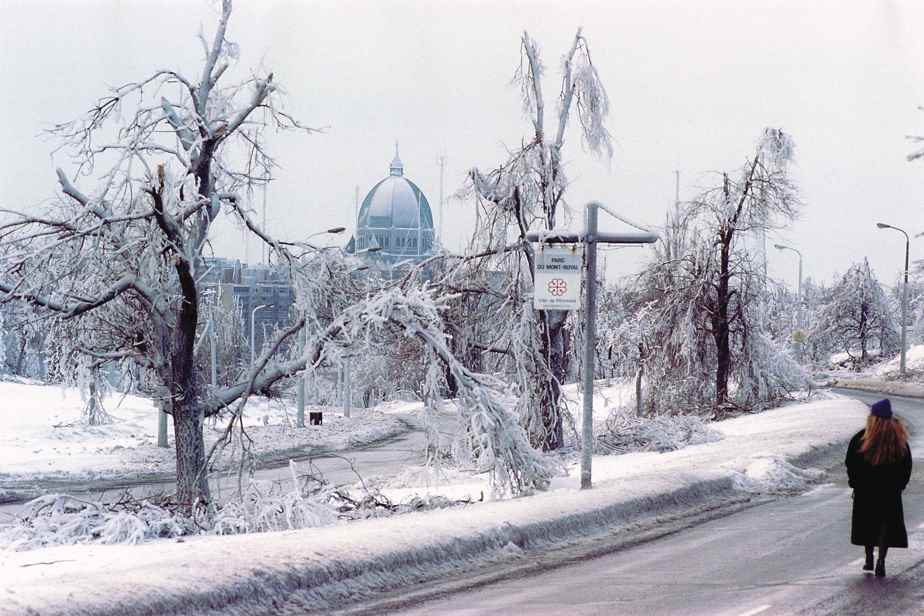Twenty-five years ago, Quebec experienced the worst natural disaster in its history: the ice storm. Two documentaries presented these days go back in time to shed new light on these long weeks of cold and darkness.
There was no indication that the bad weather at the beginning of January 1998 was going to cause a disaster. A few tens of thousands of subscribers without power in the middle of winter? A bit of ice? Hydro-Quebec has already seen this and, on the morning of January 5, no one expects the worst.
Except that’s the worst that happened: in the space of 24 hours, giant pylons that support the high-voltage lines that carry electricity began to collapse. Shortly after, dozens of wooden posts lined up along the roads of Montérégie broke. Much of the South Shore of Montreal was plunged into darkness. For a month, in the worst case.
Mutual aid and tragedy
“For most people, the ice storm was more of a major inconvenience than a tragedy,” observes Étienne Boulay, host of Ice 98, which will be featured in Historia. His friend Marc-André Chabot, director of the documentary, focuses on the efforts of the Hydro-Québec teams and the momentum of mutual aid that has been set up in the population to support the disaster victims.
“There are people for whom it was camping in the living room, agrees Jean-François Poisson, director of 35 days of darkness, which will be broadcast on TVA. There are also people for whom the ice storm is really not a good memory. People whose lives it changed, who lost family members. His more dramatic approach gives voice to the victims, among other things.
The backstory of the two documentaries is the same: the power outages that multiply, the freezing rain that does not stop, the government crisis unit that tries to give the population the right time without causing panic and the emergency aid that is being put in place.
However, even if certain figures of the crisis are interviewed in the two films, they turn out to be different and complementary.
Of Ice 98we note among others the owner of a pet store in Saint-Hyacinthe who took care of pets of vulnerable families or seniors and the owner of a motel in Saint-Jean-sur-Richelieu who accommodated dozens of Hydro-Québec employees and who says he did not want to raise prices to take advantage of the situation.
Of 35 days of darkness, we keep breathtaking images of the work of Hydro-Quebec linemen who saved the power supply to… the island of Montreal. At the height of the crisis, the entire network of the metropolis was hanging by one (big) electric wire.
Putting linemen at the heart of his film was essential for Jean-François Poisson. “We saw them in the field, we told them they were good, but we had never really heard them,” says the director.
A quarter of a century later, it is with great emotion that one of these men recounts that one evening his superior suspended operations after he expressed his concern about the safety of the structures on which he and his colleagues had to work during the night. By the next morning, 80 of those pylons had collapsed. His call saved lives.
The ice storm was the costliest natural disaster in Canadian history. It claimed at least 30 victims. Thousands of farm animals died, too. Sugar bushes and entire orchards have been decimated. The crisis left its mark, even if, as André Caillé says with different words in the two films, Quebec won the battle of the ice storm that year.
Jean-François Poisson believes that in the era of climate change, we are far from safe from reliving this kind of natural cataclysm. “We’re going to live with it, disasters like that that will require us to see each other again on a dime,” he said. The January 1998 ice storm is, in this regard, a good example of effective crisis management and collective generosity.
35 days of darknessWednesday 7:30 p.m., on TVA
Ice 98Saturday 8 p.m., at Historia
